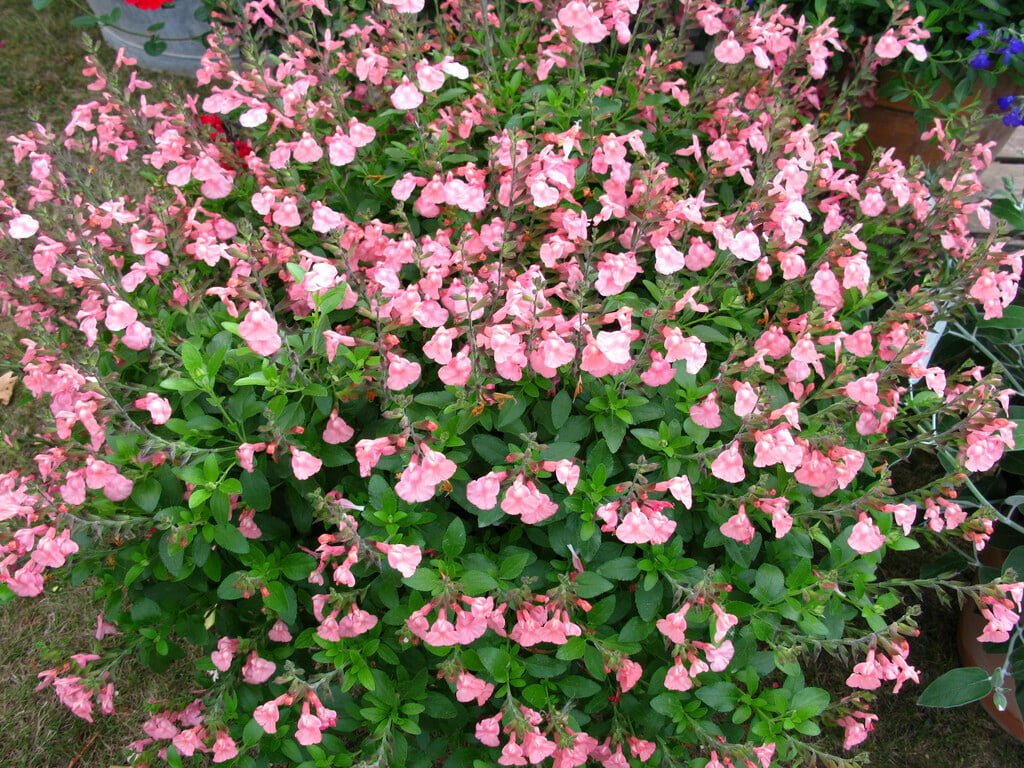Salvia 'Ribambelle'

sage 'Ribambelle'
A bushy evergreen shrub, 60-90cm high, with mid to deep-green, aromatic leaves. Salmon-pink flowers are borne in profusion, in terminal racemes, over a long period from early summer to autumn
Size
Ultimate height
0.5–1 metresTime to ultimate height
2–5 yearsUltimate spread
0.5–1 metresGrowing conditions
Moisture
Moist but well–drained, Well–drainedpH
Acid, Alkaline, NeutralColour & scent
| Stem | Flower | Foliage | Fruit | |
| Spring | Green | |||
|---|---|---|---|---|
| Summer | Orange Pink | Green | ||
| Autumn | Orange Pink | Green | ||
| Winter | Green |
Position
- Full sun
Aspect
South–facing or West–facing
Exposure
Sheltered Hardiness
H3Botanical details
- Family
- Lamiaceae
- Native to GB / Ireland
- No
- Foliage
- Evergreen
- Habit
- Bushy
- Genus
Salvia can be annuals, biennials, herbaceous or evergreen perennials, or shrubs. They have paired, simple or pinnately lobed, often aromatic leaves and 2-lipped flowers in whorls, forming simple or branched spikes or racemes
- Name status
Accepted
How to grow
Cultivation
Grow in light, moderately fertile, well-drained soil in a sheltered position, with full sun. Drought resistant and attractive to pollinating insects, best overwintered under glass in frost free conditions in full light using a well-drained potting compost
Propagation
Propagate by basal cuttings or softwood cuttings in spring or early summer or semi-ripe cuttings in late summer or autumn with bottom heat
Suggested planting locations and garden types
- Coastal
- Mediterranean climate plants
- City and courtyard gardens
- Cottage and informal garden
- Gravel garden
- Patio and container plants
- Wildlife gardens
- Flower borders and beds
Pruning
Pruning group 9 in spring, deadhead to prolong flowering
Pests
May be susceptible to leaf damage by leafhoppers, slugs and snails or rosemary beetle. Under glass may be susceptible to aphids, glasshouse whitefly and glasshouse red spider mite
Diseases
May be susceptible to honey fungus (rarely), powdery mildews, verticillium wilt and foot and root rots
Love gardening
Sign up to receive regular gardening tips, inspiration, offers and more
View our Privacy Policy
Get involved
The Royal Horticultural Society is the UK’s leading gardening charity. We aim to enrich everyone’s life through plants, and make the UK a greener and more beautiful place.
